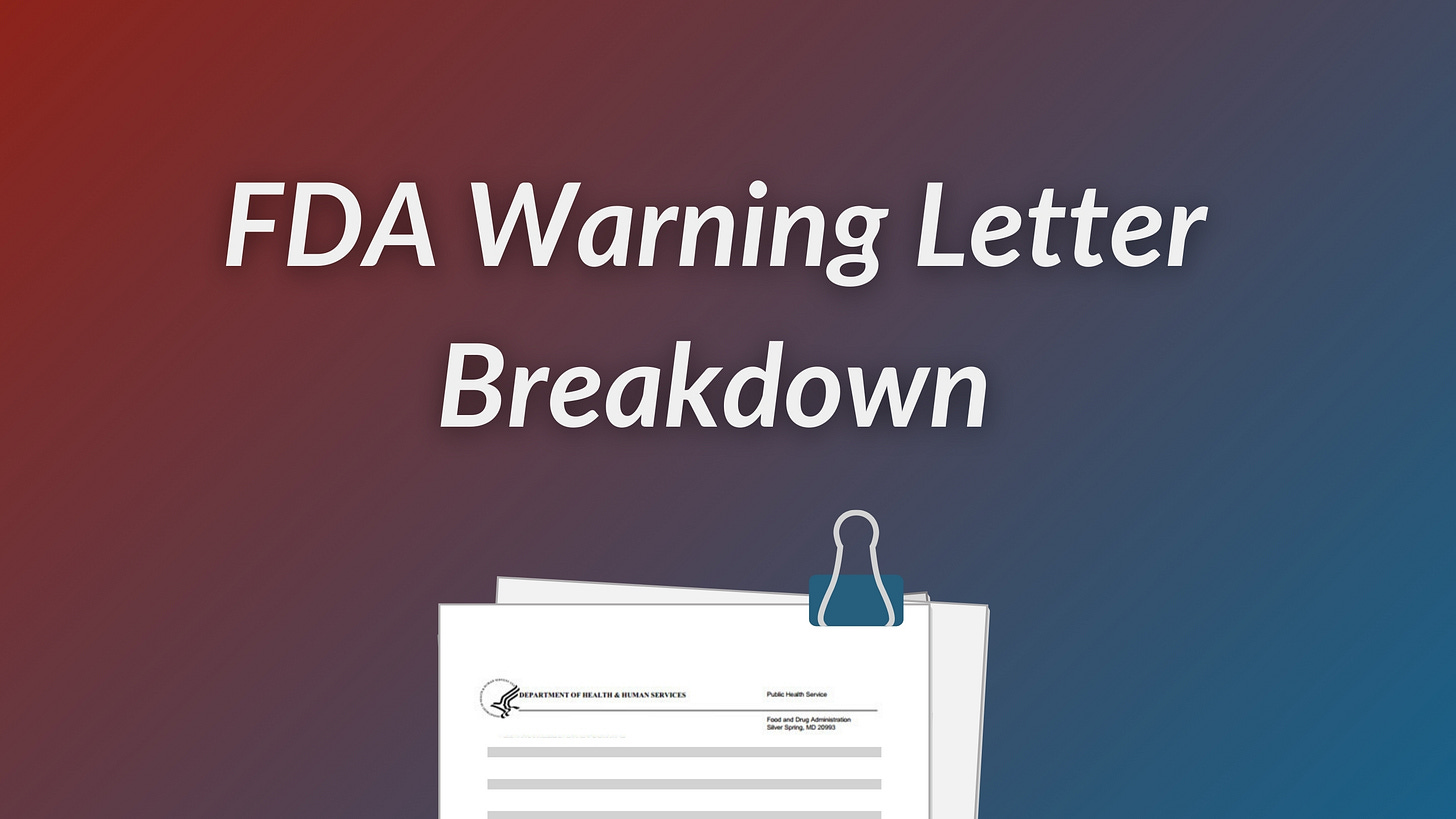FDA Warning Letter Breakdown: Inside a Potassium‑Chloride Collapse
Why another company's site is on the FDA’s radar—and what every QA/RA team should learn from it.
This breakdown is available for paid subscribers. Only paid subscribers get regular full access to our breakdowns and other analyses. If you’re not already a paid subscriber, you can upgrade here. Want to stay out of our warning letter breakdowns? Contact us to access our global network of 3,250+ consultants and 250+ former FDA employees. We run audits, mock inspections, and remediation for 17 of the top 25 life science firms.
Today's warning letter breakdown focuses on a major Indian manufacturer whose investigation and stability programs fell apart under FDA scrutiny. While this involves a traditional pharmaceutical manufacturer rather than a compounder, the systematic quality failures offer lessons for any regulated facility.
On July 11, 2025, the FDA's CDER issued a warning letter to Glenmark Pharmaceuticals Limited's Pithampur, India, facility following a February 3-14, 2025, inspection. The facility manufactures drug products for the US market, but by June 2024, it was already recalling potassium chloride extended-release capsules due to dissolution failures.
Despite multiple response attempts, the FDA deemed the corrective actions "inadequate." The resulting warning letter illustrates how shortcuts in investigation, stability backlogs, and unvalidated methods can systematically compromise product quality.
Below, we've outlined the key violations along with practical, actionable takeaways you can apply immediately.
Investigation failures that missed the real root cause
The letter begins with Glenmark's failure to adequately investigate dissolution failures during stability testing—a violation that ultimately led to a market recall.
For potassium chloride ER capsules, Glenmark initially blamed API particle size issues, but FDA dismantled this theory, noting that both passing and failing batches used API lots with identical characteristics, and the same API lot number appeared in both compliant and out-of-specification batches.
Glenmark then pivoted to a 2021 process change involving solution content as the culprit. But again, the FDA found the investigation lacked sufficient scientific evidence. Even more damaging, the company ignored other significant process changes from 2017, including equipment modifications and parameter adjustments that could have impacted dissolution.
The pattern repeated with another unnamed drug product. This second product violation was particularly concerning because Glenmark implemented revised batch records and distributed additional batches before completing proper validation studies to confirm their proposed root cause.
Ask yourself:
When we identify a potential root cause, do we systematically rule out all other variables before concluding our investigation?
Does our investigation SOP require expanding the scope to include all process changes within a defined lookback period?
Can we demonstrate that our root cause determination is supported by controlled studies, not just hypothesis?
Stability testing: the 3-month delay
The FDA discovered that stability testing was overdue by 3 months or longer for a large proportion of samples.
For potassium chloride ER capsules specifically, dissolution failures weren't detected for approximately 100 days after stability samples were pulled—creating dangerous delays in issuing field alert reports and conducting recalls.
Glenmark's response included plans for additional QC resources and equipment, but the FDA found the impact assessment inadequate because it didn't adequately address patient safety risks. The agency emphasized that without an appropriate ongoing stability program, there's no scientific evidence that products meet specifications through their labeled expiry.
Ask yourself:
Do we have automated alerts when stability samples approach their testing deadline?
Is our stability workload assessment updated quarterly to prevent resource bottlenecks?
When stability testing is delayed, should we immediately assess the potential impact on patient safety, rather than just treating it as a scheduling issue?
Method validation—the missing foundation
Maybe most fundamentally, the FDA found that multiple test methods for API and drug product testing hadn't been validated, verified, or appropriately transferred.
The validation gaps specifically included in-house elemental impurities testing and other critical quality attributes that senior leadership explicitly confirmed were not properly validated.
Glenmark's gap assessment acknowledged the problem and provided completion timelines; however, the FDA noted that the interim impact assessment didn't scientifically justify the reliability of historical test results. The agency stressed that system suitability and calibration controls aren't substitutes for proper method validation.
Ask yourself:
Do we have a dashboard showing validation status for every test method in use?
Can we block sample testing in LIMS if the method hasn't completed validation?
When we discover validation gaps, do we immediately assess whether historical data supports product quality claims?
CAPA theater
The FDA devoted significant space in its latest letter explaining why Glenmark's responses were inadequate. The company provided gap assessments and timelines but failed to include supporting data, complete validation reports, or scientific justification for their conclusions.



